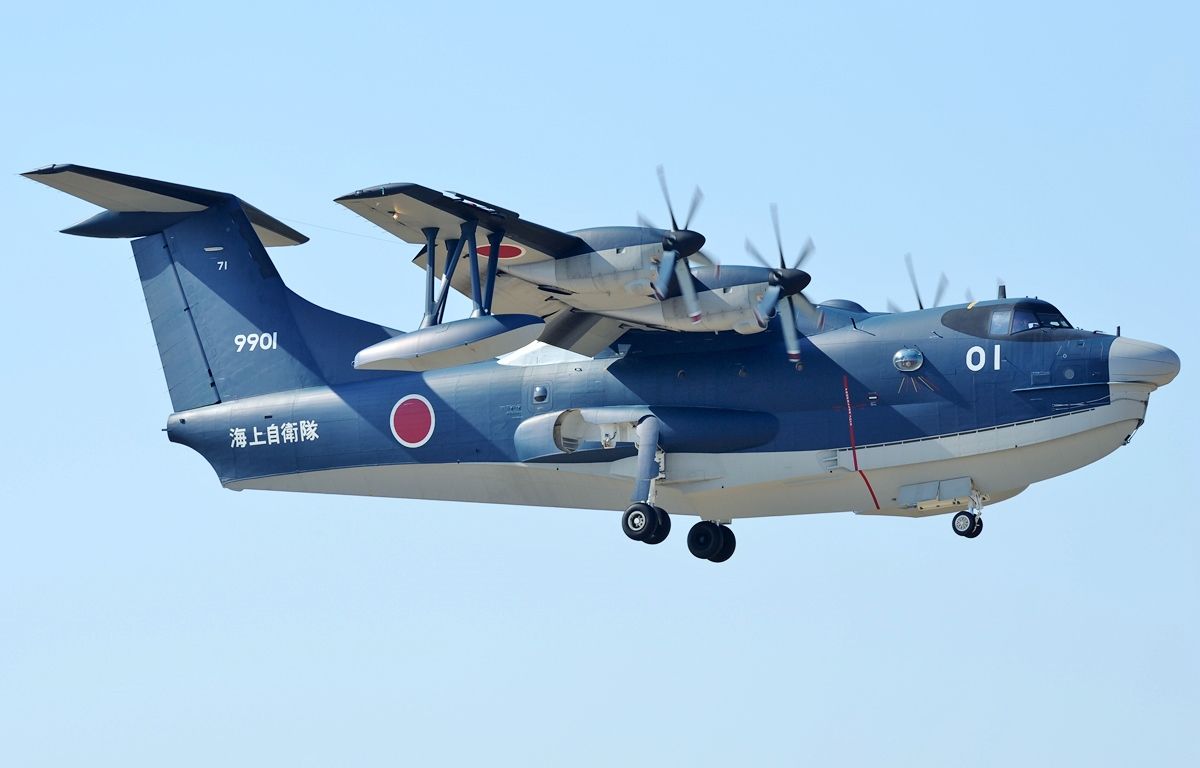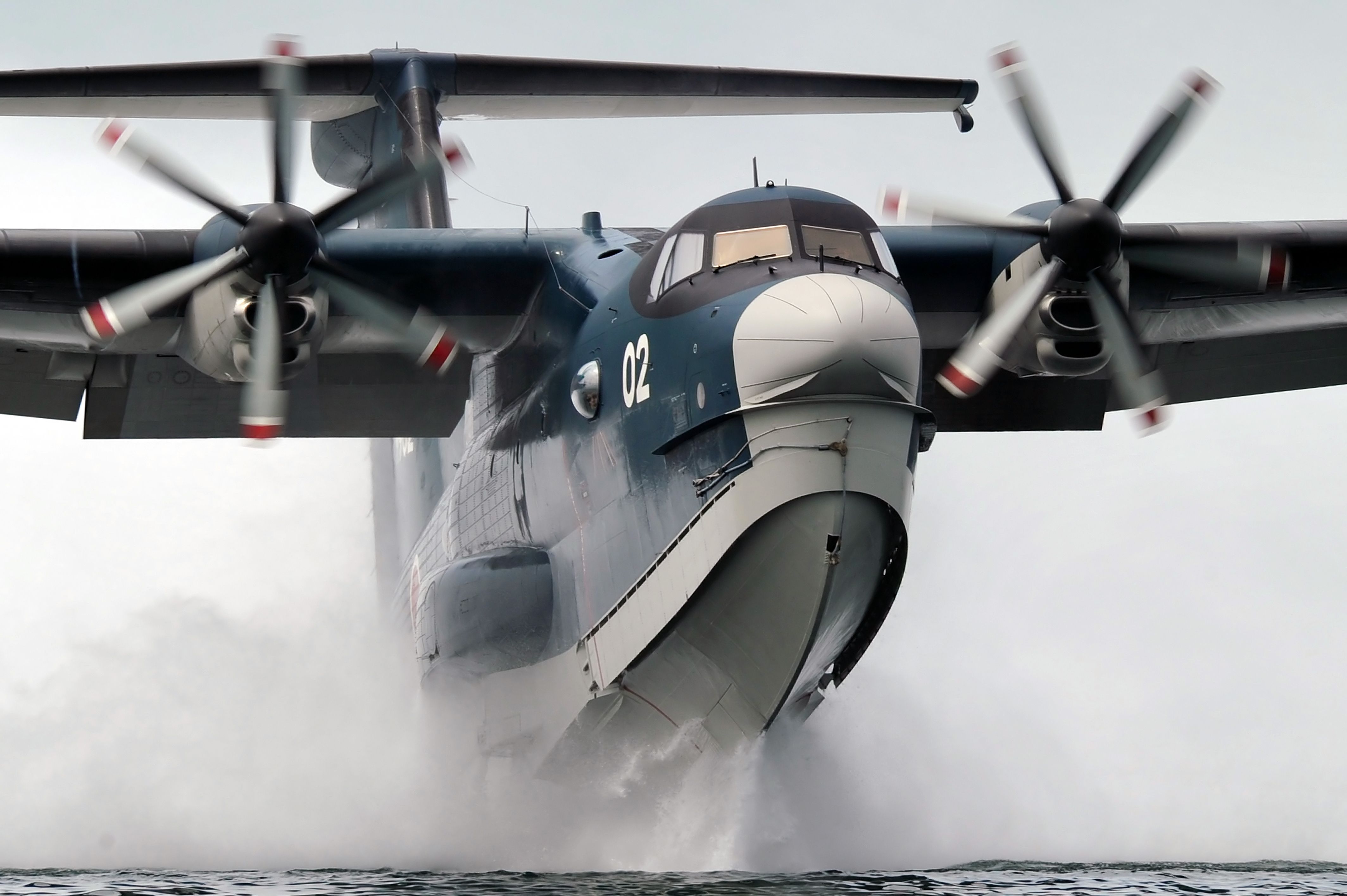The ShinMaywa US-2: Japan's STOL Seaplane
The ShinMaywa US-2 is Japan's maritime search and rescue aircraft.
While traveling by flying boat or seaplane used to be the norm before the Second World War, did you know that Japanese aircraft manufacturer ShinMaywa Industries is still building seaplanes today?
In January 1969, the Japan Maritime Self-Defense Force (JMSDF) issued a production order to Japanese seaplane manufacturer Shin Meiwa for 21 aircraft for anti-submarine warfare. They also asked for a variant they could use for maritime search and rescue missions.
The US-2 is a much-improved version of the US-1s
Designated the US-1A, the aircraft was the first Japanese-manufactured plane that could take off from both runways and the sea. By the 1990s, the aircraft was beginning to show its age, and the JMSDF wanted something to replace it with.
Knowing they already had a buyer, ShinMaywa started developing a replacement that would include numerous refinements over its predecessor, including a pressurized cabin, new instruments, and more powerful Rolls-Royce AE 2100 engines. The JMSDF also asked for the plane to have improved search and rescue capabilities and better onboard facilities.Named the ShinMaywa US-2, flight testing began in 2003 before full production in 2007. As is usual in Japan ShinMaywa outsourced many of the components. Mitsubishi makes the plane's outer wing sections and the rear part of the engine nacelles. At the same time, NIPPI Corporation builds the watertight landing gear housings, and Kawasaki Heavy Industries produces the cockpit. In 2009 the first US-2 was delivered to Japan's Ministry of Defense. Realizing the plane's potential as a civilian fire-fighting aircraft, ShinMaywa replaced one of the plane's fuel tanks with a water tank capable of holding 15 tons of water. Compared to the search and rescue version, the aircraft has a reduced range of 1,245 nautical miles.
US-2 Specifications and characteristics
- Crew: 11 (two pilots, one search-and-rescue coordinator, two onboard maintenance personnel, three divers, two paramedics, and one sensor operator)
- Capacity: 20 passengers or 12 stretchers
- Length: 109 ft 9 in
- Wingspan: 108 ft 9 in
- Height: 32 ft 2 in
- Wing area: 1,462 sq ft
- Empty weight: 56,504 lb
- Gross weight: 121,581 lb
- Max takeoff weight: 105,160 lb land takeoff
- Power plant: 4 × Rolls-Royce AE 2100J turboprop, 4,592 hp each
- Propellers: 6-bladed Dowty R414
A US-2 during takeoff. Photo:海上自衛隊 via Wikimedia Commons.
Performance
- Maximum speed: 350 mph, 300 kn
- Cruise speed: 300 mph, 260 kn at 20,000 ft
- Stall speed: 56 mph, 49 kn
- Range: 2,900 mi, 2,300 nmi
- Service ceiling: 23,606 ft
- Takeoff distance on ground: 1,610 ft at MTOW
- Landing distance on ground: 4,900 ft at MTOW
- Takeoff distance on water: 920 ft at Loaded weight
- Landing distance on water: 1,080 ft at Loaded weight
Export opportunities
Given the aircraft's all-around usefulness, it is not surprising that other countries are interested in either purchasing the US-2 or manufacturing the plane under license. The Indian Navy and Coast Guard would like to have the aircraft assembled in India as they believe it would reduce the cost by 25%.
Given the concerns many nations have with China's military growth in the South China Sea, Indonesia is seen as a potential buyer. Thailand is also looking to bolster its maritime patrol aircraft capabilities while at the same time increasing defense ties between it and Japan.
As for the firefighting version of the plane, Greece is looking into the potential of the US-2 to replace its aging Canadair-Bombardier planes.
Due to its limited production capacity, ShinMaywa would have a hard time building the US-2 for anyone other than the JMSDF, so allowing the plane to be made in another country under license would be a good idea.


Δεν υπάρχουν σχόλια:
Δημοσίευση σχολίου